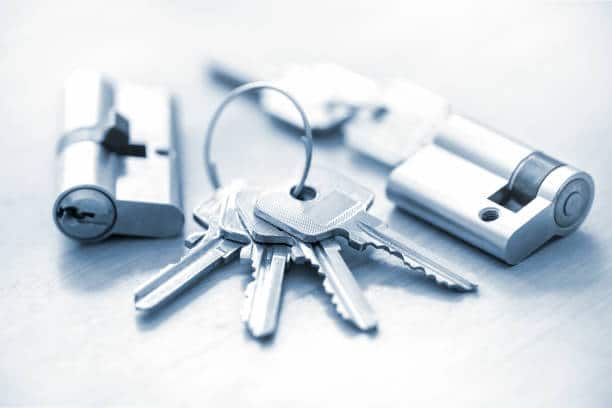As homeowners, one of our top priorities is to ensure the security of our homes. One crucial aspect of home security is the quality and functionality of our locks. Over time, locks can become worn out or damaged, compromising the safety of our homes. However, replacing a cylinder lock may seem like a daunting task for many. In this article, we will guide you through the process of replacing a cylinder lock in a few simple steps, empowering you to enhance the security of your home.
Understanding the different types of cylinder locks
Before we delve into the process of replacing a cylinder lock, it is essential to understand the different types of locks available. The two main types of cylinder locks are the single-cylinder lock and the double-cylinder lock.
A single-cylinder lock is the most common type and is typically found on residential doors. It features a keyhole on one side of the door and a thumb turn on the other side. This allows you to lock and unlock the door from the inside without needing a key.
On the other hand, a double-cylinder lock requires a key to lock and unlock the door from both the inside and outside. This type of lock provides an extra layer of security, especially for doors with glass panels, as it prevents potential burglars from reaching in and unlocking the door.
Tools needed to replace a cylinder lock
To replace a cylinder lock, you will need a few essential tools. Before you start, make sure you have the following supplies on hand: A screwdriver (flathead or Phillips, depending on the type of screw used).
- Replacement cylinder lock
- Tape measure
- Pliers
- Lubricant (such as WD-40)
- Safety goggles (optional, but recommended)
Having these tools ready will make the process smoother and more efficient, allowing you to quickly replace your cylinder lock and enhance the security of your home.
Step-by-step guide on replacing a cylinder lock
Now that we have covered the basics, let’s dive into the step-by-step process of replacing a cylinder lock. Follow these instructions carefully to ensure a successful replacement:
- Prepare the door: Start by closing the door and ensuring it is securely locked. This will prevent any accidents or unwanted access during the replacement process. Put on your safety goggles for added protection.
- Remove the screws: Using the appropriate screwdriver, remove the screws on the inner side of the door that holds the cylinder lock in place. You’ll need the screws later, so store them somewhere safe.
- Remove the old cylinder lock: Once the screws are removed, you can now pull the old cylinder lockout of the door. Use pliers if needed to grip and gently remove the lock. Take care not to harm the door or the surroundings.
- Measure and prepare the new cylinder lock: Take the tape measure and measure the length of the old cylinder lock. Transfer these measurements to the new cylinder lock and use a saw or appropriate tool to trim it to the correct size. Remember to follow the manufacturer’s instructions for any specific requirements.
- Insert the new cylinder lock: With the new cylinder lock prepared, insert it into the hole in the door, ensuring it fits securely. Align the screw holes on the lock with those on the door.
- Secure the cylinder lock: Take the screws you removed earlier and use them to fasten the new cylinder lock onto the door. Tighten the screws firmly but be careful not to overtighten, as this may damage the lock or door.
Congratulations! You have successfully replaced your cylinder lock and improved the security of your home. Remember to test the lock to ensure it functions smoothly before leaving it unattended.
Common mistakes to avoid when replacing a cylinder lock
While replacing a cylinder lock is a relatively straightforward process, there are some common mistakes to avoid to ensure a successful replacement. You can avoid these mistakes and spare yourself the aggravation and wasted time:
- Incorrect measurements: Accurate measurements are crucial when replacing a cylinder lock. Failing to measure correctly may result in a lock that does not fit properly, compromising the security of your home. Take your time and double-check your measurements before cutting the new lock.
- Forcing the lock: If you encounter resistance when inserting the new lock or turning the key, avoid forcing it. Forcing the lock can lead to damage or misalignment, rendering the lock ineffective. Instead, take a step back, reassess, and make any necessary adjustments before trying again.
- Overtightening the screws: While it is important to secure the lock firmly, overtightening the screws can cause damage to the lock or door. Use a moderate amount of force when tightening the screws to ensure a secure fit without risking any unnecessary damage.
By avoiding these common mistakes, you can ensure a successful replacement and enjoy the improved security that comes with a properly functioning cylinder lock.
Tips for maintaining your new cylinder lock
Now that you have successfully replaced your cylinder lock, it is important to maintain its functionality and prolong its lifespan. Here are some tips to help you care for your new lock:
- Regular lubrication: Apply a small amount of lubricant, such as WD-40, to the keyhole and any moving parts of the lock. This will guarantee smooth operation and help prevent rust.
- Keep it clean: Dust and debris can accumulate in the keyhole and affect the lock’s performance. Regularly clean the keyhole using a soft brush or compressed air to remove any particles.
- Avoid excessive force: Handle your lock with care and avoid using excessive force when locking or unlocking the door. This will help prevent unnecessary wear and tear on the lock.
By following these maintenance tips, you can extend the lifespan of your new cylinder lock and ensure it continues to provide optimal security for your home.
Benefits of replacing a cylinder lock
Replacing a cylinder lock offers numerous benefits beyond enhancing the security of your home. Here are some advantages you can expect when you replace your cylinder lock:
- Improved security: A new cylinder lock provides enhanced security, making it more challenging for potential burglars to gain access to your home.
- Peace of mind: Knowing that you have a reliable and functional lock in place can give you peace of mind, allowing you to feel safe and secure within your own home.
- Upgraded technology: Newer cylinder locks often come with advanced features and technology, such as bump-proof or pick-resistant mechanisms, providing an extra layer of protection against break-ins.
By replacing your cylinder lock, you not only improve the security of your home but also enjoy the peace of mind that comes with knowing you have taken proactive steps to safeguard your property and loved ones.
When to seek assistance from a professional locksmith
While replacing a cylinder lock can be a DIY project for many homeowners, there may be instances where it is best to enlist the help of a professional locksmith. Here are some situations where calling a locksmith is recommended:
- Complex locks: If your lock is a high-security or specialized lock, it may require specialized knowledge and tools to replace it. In such cases, it is best to leave the job to a professional locksmith to ensure proper installation and functionality.
- Lack of confidence: If you lack the confidence or experience to perform the replacement yourself, it is always better to seek professional help. Locksmiths have the expertise and experience to handle lock replacements efficiently and effectively.
- Time constraints: If you are short on time or simply prefer to have the job done quickly and correctly, a professional locksmith can save you valuable time and effort.
Remember, the security of your home is paramount, so it is crucial to make the right decision based on your specific circumstances. A professional locksmith can provide the expertise and peace of mind you need when replacing a cylinder lock.
Conclusion
Ensuring the security of our homes is of utmost importance, and replacing a cylinder lock is a proactive step towards achieving that goal. By understanding the process and following the step-by-step guide provided in this article, you now have the knowledge and confidence to replace a cylinder lock yourself. However, in cases where you feel unsure or lack the necessary tools, it is recommended to seek the assistance of a professional locksmith. Remember to regularly maintain your new lock to maximize its lifespan and functionality. By taking these steps, you can enjoy the peace of mind and improved security that comes with a properly functioning cylinder lock.
Frequently Asked Questions
1. How long does it take to replace a cylinder lock?
The time it takes to replace a cylinder lock can vary depending on your skill level and the complexity of the lock. It can take an hour or thirty minutes on average.
2. Can I use the same key for the new cylinder lock?
In some cases, it is possible to rekey the new cylinder lock to match your existing key. However, this depends on the specific lock and key system you have. It is best to consult with a professional locksmith for guidance.
3. Do I need any special skills to replace a cylinder lock?
Replacing a cylinder lock does not require any special skills, but it does require basic tools and a careful approach. Following the step-by-step guide provided in this article will help you successfully replace your lock.
4. How often should I replace my cylinder lock?
The lifespan of a cylinder lock can vary depending on factors such as usage and maintenance. As a general guideline, it is recommended to replace your lock every 5 to 7 years to ensure optimal security.
5. Can I replace a cylinder lock on my own if I rent an apartment?
If you rent an apartment, it is important to consult with your landlord or property management before replacing a cylinder lock. In some cases, they may have specific rules or requirements regarding lock replacements.


